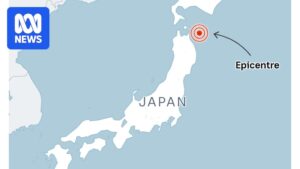
Scientists have raised alarms over the potential presence of the deadly H5 bird flu strain on one of Australia’s remote sub-Antarctic islands. Recent observations by the Australian Antarctic Program have detected unusual mortality rates among elephant seals on Heard Island, part of the Heard Island and McDonald Islands, an Australian external territory located over 4,000 kilometers southwest of Perth in the Southern Ocean.
The Department of Agriculture, Fisheries and Forestry released a statement on Friday, noting, “Australian scientists have observed signs consistent with H5 avian influenza (bird flu) in wildlife during a management voyage to sub-Antarctic Heard Island.” The statement emphasized that while the detection is not yet confirmed, it highlights the importance of Australia’s preparedness for a potential outbreak.
Interestingly, the scientists did not report unusual mortality levels among other species on the island, such as penguins and seabirds. Samples have been collected and are scheduled for testing in Australia upon the researchers’ return in November.
Australia’s Vigilance Against H5N1
Australia remains the only continent that has not yet reported an outbreak of the highly contagious H5N1 strain, which was first identified in 1996. The global landscape, however, tells a different story. In recent years, there have been increasing reports of H5N1 outbreaks in both wild and domestic animals worldwide, with millions of farmed and wild birds estimated to have succumbed to the virus.
The World Health Organization (WHO) notes that while human contraction of the virus is rare, it remains a possibility. Since last year, dozens of people, primarily farm workers in the US, have been infected, resulting in one fatality. The virus does not seem to easily infect humans or spread from person to person, according to WHO.
Impact on Wildlife and Agriculture
The H5 virus is known for its severe impact on a variety of animals, including seals, dairy cattle, foxes, cats, and pigs. The potential detection on Heard Island underscores the virus’s ability to affect diverse species, raising concerns about its spread to other wildlife in the region.
Australia’s agricultural industry has been on high alert, with the government investing over $100 million into preparedness and response capabilities. This proactive approach aims to safeguard the nation’s biosecurity and protect its significant agricultural sector from the devastating effects of an outbreak.
Global Context and Historical Parallels
The current situation on Heard Island draws parallels to past instances where isolated outbreaks have prompted swift action. Historically, the spread of avian influenza has led to significant economic and ecological consequences, necessitating international cooperation and rapid response strategies.
Experts emphasize the importance of continued vigilance and research to better understand the virus’s transmission dynamics and develop effective containment measures. The lessons learned from past outbreaks serve as a crucial guide in managing potential threats posed by H5N1.
Looking Ahead
As scientists await the results of the samples collected from Heard Island, the focus remains on maintaining robust surveillance and response systems. The potential presence of H5 bird flu in such a remote location serves as a stark reminder of the interconnectedness of global ecosystems and the need for comprehensive biosecurity measures.
Meanwhile, the Australian government and scientific community continue to collaborate on strategies to mitigate the risks associated with avian influenza, ensuring that the country remains prepared for any eventualities.
For ongoing updates and detailed coverage, readers are encouraged to follow developments through trusted news sources and official government announcements.






